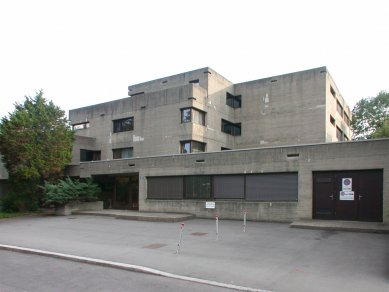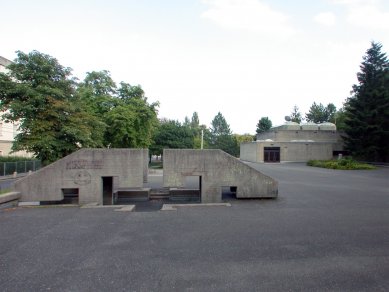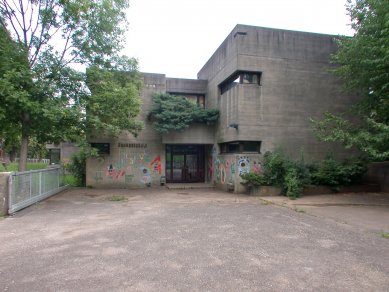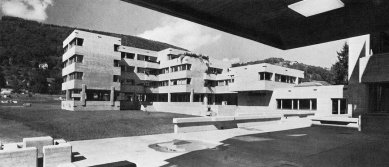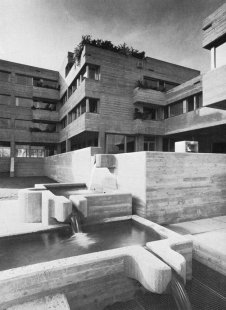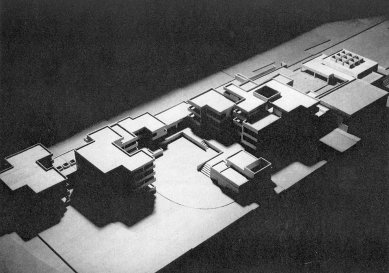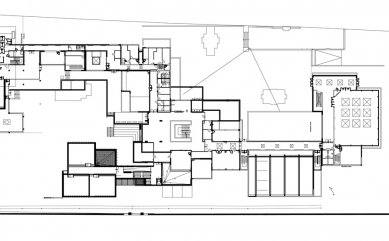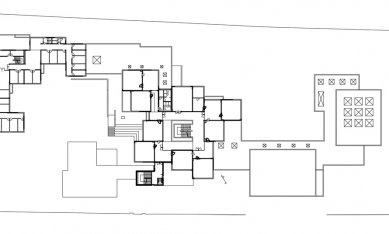In constructing the Teaching Academy as a 'documenť of a time of new departures in an ecclesiastical and architectural sense, the Catholic Church assumed a task as building developer that was to lead to a number of notable pastoral and sacred buildings. The elongated site on the edge of Chateau Eggenberg was overbuilt with a strongly sculptured ensemble of buildings in exposed concrete, with a large fore-court leading to the entrance and a green area to the park. From east to west, autonomous functional groups are linked up to form a chain: assembly hall, gymnasium, academy building, chapel, academy boarding school, boys' boarding school, and teacher training school. A detached heating building completes the complex. The sculpted outside areas and the plasticity of the building forms are amplified by limiting the complex to only few materials: smooth-surface exposed concrete, black asphalt for grounds, pinewood for windows, doors, etc. The academy reflects a 'purism' that puts the ethical before the aesthetic aspect and which emphasizes the social mission of architecture.

